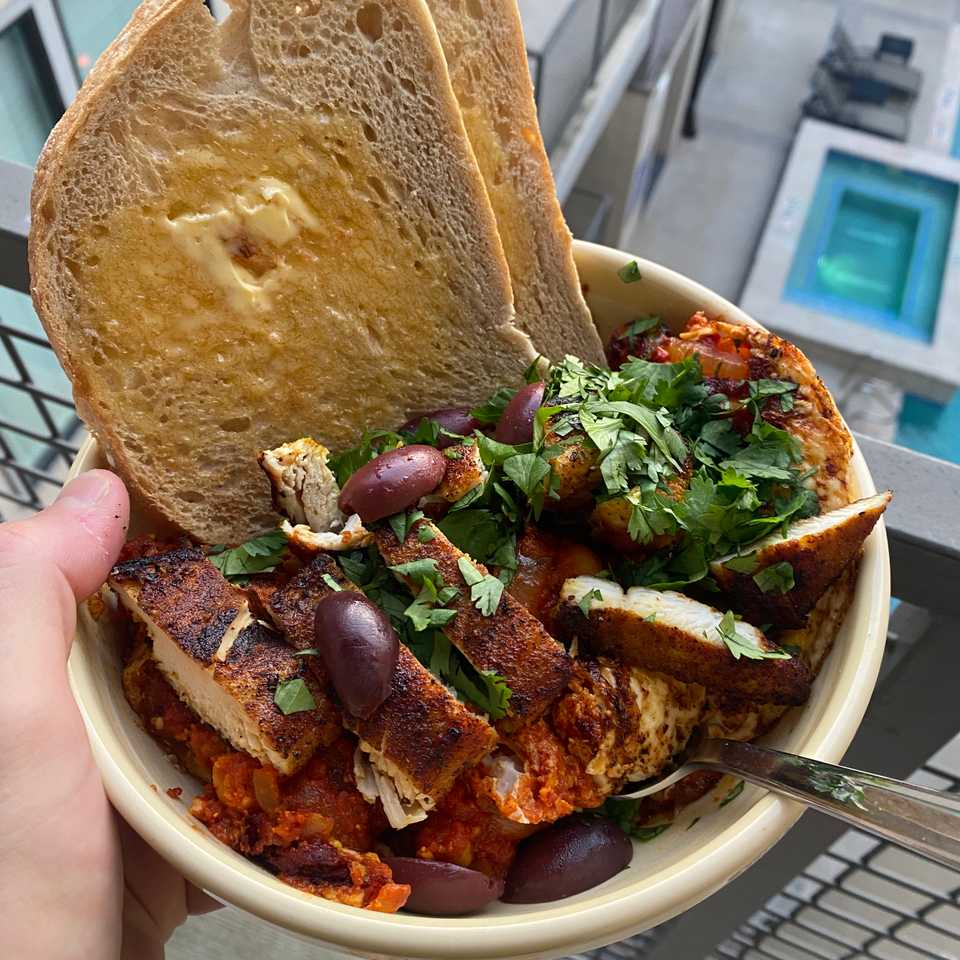Because it’s fresh in my belly, and fresh on my mind tonight, I wanted to take a second to sing the praises of shakshuka.
Shakshuka, colloquially dubbed eggs in hell, is a dish composed of eggs poached in a fresh, rich, and thoroughly spiced tomato sauce. It can be as simple as that, or as doctored as you like. It likely originated somewhere in Northern Africa or Western Asia, and has since inspired a fleet of vaguely Mediterranean renditions.
In accordance with its hemisphere-spanning origin story, the spices can be as diverse, as simple or as exotic, as warm or as cold, as your palette demands and your spice cabinet provides. The best recipes I’ve found work off a foundation cumin and paprika (smoked paprika is ideal in a barbecue-less apartment). However, the dish can incorporate Indian spice mixtures vis-à-vis curry powders and masalas, or Central American renditions incorporating herbs such as oregano.
I make this at least once a month. It primarily utilizes pantry ingredients, but the sauce is best developed with a base of properly softened and seasoned red bell pepper, onion, and garlic topped with freshly cracked eggs. Onions, garlic, and eggs are easy to come by in my pantry most nights, but I typically keep a bell pepper in the crisper just in case.
All you need to get started is a large can of tomatoes, the aforementioned produce, and your seasonings of choice, but it’s astonishingly easy to doctor up at any stage in the process. At different points in the cooking process, I toss in anything from harissa paste, sun-dried tomato paste, miso, sliced olives, and canned chickpeas, to feta, parmesan, chorizo, soyrizo, baked tofu, then top with fresh herbs like parsley or cilantro and hot sauce. An underrated and often unreported technique is searing a nice slab of meat (chicken marinated with za’atar and lemon being a classic) in a stainless steel pan and developing the sauce on top of the sucs, using those über acidic tomatoes to leech that built-up flavor off the bottom.
Before cracking the eggs in, the sauce can be frozen or refrigerated for a few nights worth of leftovers, ensuring I can get a few more mindless, effortless nights of dinners in from this low-effort meal. With the right mix of ingredients, it turns out to be fairly low calorie, healthy, full of vitamins, and a good source of protein. If you’re concerned the macros, you can balance out the macros by serving it with everything from buttered sourdough to naan to rice.
As far as jumping off points go, this (paywalled) recipe in the New York Times by Melissa Clark is my usual reference point when I need to re-up on the recipe’s steps or sequencing. To supplement this, I often return to this variation by the G.O.A.T., Yotam Ottolenghi,, which has some interesting differences that have informed me and expanded this dish’s horizons. I am currently cooking through a handful of his cookbooks, so it also helps to stay within that flavor profile and find another excuse toss in some of the more exotic and otherwise underutilized ingredients that those recipes call for, such as harissa and tamarind paste.
Anyways, this is a staple of my diet these days. I found it during the long lockdown and it’s stuck with me since—while I’ve charted a course from long, sedentary Civilization V matches, to running a strict caloric deficit, to wolfing down chicken breast as I bulk back up. In all circumstances: no matter how tired, hungry, or drained of creativity I am, shakshuka does the trick.
